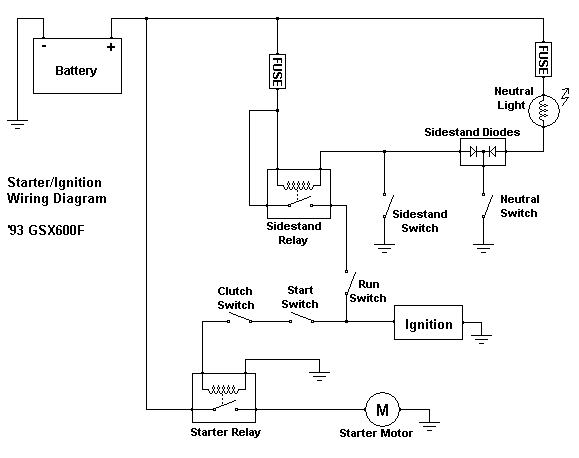

Some quick notes before starting:
For the starter motor to engage, everything listed prior must work, plus: the clutch switch must be closed (clutch pulled in), the starter switch must be closed (pressing the starter button), and the starter relay must work. I noticed my bike doesn't even have a clutch switch, so that part of the circuit is always shorted for me.
Regarding diodes: The diode on the right isn't particularly important to the function of the bike. If it's shorted, it shouldn't change the behavior. If it's open, the neutral light won't come on.
The diode on the left is more important. If it's shorted, then the sidestand switch can also activate the neutral light (sidestand up would make the neutral light come on). If it's open, then the ignition won't work unless the sidestand is up, regardless of whether the bike is in neutral (in effect, the neutral switch is no longer part of the circuit feeding the sidestand relay).
As always, grounding is important! Even if you remove the sidestand and neutral switches from the circuit by shorting around them, they still must be grounded since the sidestand relay coil needs to be shorted to ground to activate.
Watching the battery voltage when starting the bike can also give clues. If there is a large drop in voltage when the starter button is pressed, this suggests that the starter relay is supplying power to the starter motor. A small rise in voltage would suggest that the only thing happening is the headlight is being cut out during starting, but the starter motor is not being supplied power.
Copyright (c) 2009 Paul Miner <$firstname.$lastname@gmail.com>